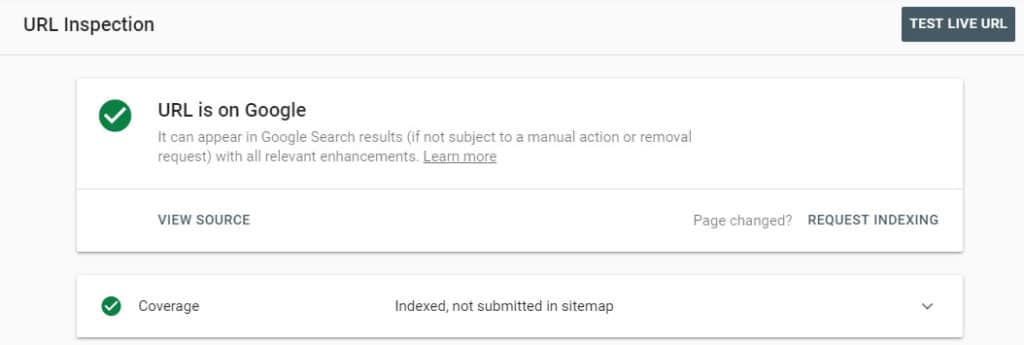How do you fix the “indexed, not submitted in sitemap” error in Google Search Console?

The “Indexed, not submitted in sitemap” message in Google Search Console indicates that Google has indexed some pages on your website. Still, these pages are not included in your XML sitemap. It’s not necessarily an error but rather an information message. Including pages in a sitemap helps Google better understand your site’s structure and can benefit SEO. Here’s how you can address this:
- Review the Pages: Check the pages that have been indexed but not submitted in the sitemap. Sometimes Google indexes pages you didn’t intend to be indexed (e.g., temporary pages, internal search result pages). Determine if these pages should be indexed or not.
- Update Your Sitemap: If the pages are important and you want them to be indexed, ensure they are included in your XML sitemap. You can manually add them to your sitemap or use a sitemap generator tool/plugin to create a new sitemap that includes all the necessary pages.
- Submit the Updated Sitemap: Once your sitemap is updated, go back to Google Search Console and submit the updated sitemap. Go to the ‘Sitemaps’ section and enter the URL of your sitemap, then click on ‘Submit’.
- Set URL Parameters (if needed): If the issue is caused by URL parameters (like session IDs or filters), you can use the URL Parameters tool in Google Search Console to tell Google how to handle parameters.
- Use Robots.txt and Meta Tags for Exclusions: If there are pages you do not want to be indexed, ensure they are either disallowed in your robots.txt file or have a noindex meta tag. Be cautious when using robots.txt to block pages, as it may have wider implications for your site’s crawling and indexing.
- Monitor Index Coverage Report: After submitting your updated sitemap, watch the Index Coverage report in Google Search Console. It may take some time, but you should eventually see the “Indexed, not submitted in sitemap” notice decrease as Google processes your updated sitemap.
- Check for Canonical Issues: Ensure that the canonical URLs are set correctly. If you have a page with multiple URLs pointing to the same content, ensure the canonical URL is included in the sitemap.
- Internal Linking: Ensure the pages in question are properly linked to other site pages. Good internal linking helps search engines understand the structure and importance of different pages on your site.
- Regularly Update Sitemap: If your site frequently changes or has new content added, consider regularly updating it to ensure it remains accurate and reflects your site’s content.
Remember that while having pages in the sitemap can help, it’s not mandatory for indexing. Google can and will index pages even if they are not in your sitemap, especially if other sites link to them or are accessible through internal links.
FAQ
What does “Indexed, not submitted in sitemap” mean?
Is “Indexed, not submitted in sitemap” necessarily a bad thing?
How can I fix the “Indexed, not submitted in sitemap” status?
Does every page need to be in the sitemap?
How long does it take for the status to change after I update my sitemap?
What if the indexed pages are ones I don’t want to be indexed?
Can pages get indexed even if they are not in any sitemap?
Is there a limit to how many URLs I should include in my sitemap?
Can a sitemap include URLs from different domains?
Can “Indexed, not submitted in sitemap” status affect my site’s SEO?
Published on: 2023-06-08
Updated on: 2023-06-08